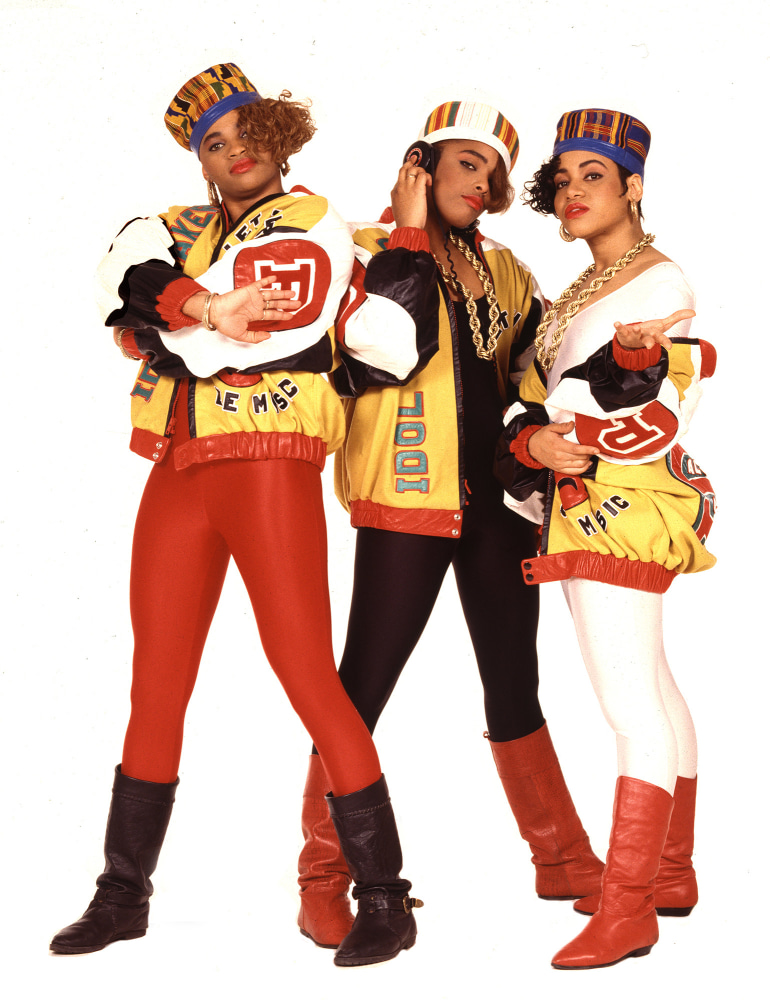
On Monday, Forbes revealed Jay-Z to be the first billionaire rapper, a far cry from his early days selling CDs out of his car in the Brooklyn neighborhood of Bed-Stuy.
For his first promotional photoshoot in 1995, Jay-Z, born Shawn Carter, wanted to be shot in front of symbols of wealth – expensive cars, buildings and yachts. When the photographer joked that he’d one day have a yacht, Jay-Z responded: “There’s no doubt I will.”
Jay-Z named world's first billionaire rapper by Forbes magazine
His humble roots are traced in a new exhibition called Contact High: A Visual History of Hip-Hop, which features 140 photos of hip-hop culture from the 1970s to the present day, on view at the Annenberg Space for Photography in Los Angeles until 18 August.
It’s a selection from a book of the same name, which traces the underground roots of hip-hop in New York to its global rise as a multimillion-dollar industry.
“To see what hip-hop looked like, and not just sounded like, was really important,” said the curator, Vikki Tobak. “It’s the first of its kind ever mounted. There has never been an exhibition featuring the past 40 years of hip-hop. It started as an archiving project, then became a book, and is now up on the museum walls.”
The exhibition is divided into six chronological sections, from 1979 to 2019. Each section is named after an album or song, like Places and Spaces, the famous Donald Byrd jazz album, to Everyday People, the Sly and the Family Stone song reworked by Arrested Development as People Everyday, and California Love and beyond, named after the Tupac and Dr Dre track.
It starts in 1979, when hip-hop was still a subculture, long before it hit the radio. “It was a music of everyday people – you had to go to the clubs to experience it,” said Tobak. “They really felt for this culture, so photographers pointed their camera lens to this culture, which was yet to become what it is today.”
The exhibit showcases 60 photographers and features photos by Ricky Flores, who shot dancers in the South Bronx in the 1980s, and Joe Conzo, who pictured groups of on the streets of New York with their ghetto blasters.
“A lot of the photos are community shots with dancers, DJs and rappers, people in neighborhoods,” said Tobak. “You see this evolution of stars coming out of that.”
Hip-hop has become a mainstream industry, but the exhibition traces how the genre’s roots were based in resistance. Some images show Mos Def at a rally against police brutality in 1990s New York, others how rappers responded against racism during the trial of the Central Park 5.
“Groups like 2 Live Crew fought for free speech, for what you could and couldn’t say on a record, which paved the way for free speech in hip-hop,” said Tobak. “Gang Starr had a Malcolm X image on the cover of his Daily Operation album, speaking truth to power.”
Probably the most famous photo in the exhibition is Barron Claiborne’s series of the Notorious BIG, the last photoshoot with the rapper, taken three days before his death in 1997. Wearing a crown, it commemorates the rapper’s legacy.
“A lot of these photos are memorials for people who died too young,” said Tobak. “There are photos of Tupac, Biggie, some in their 20s. It’s a celebration but also a memorial.”
There are also photos in the exhibition of Nipsey Hussle, who was shot and killed in April. Since then, it has sparked peace talks among rival gangs in LA.
“There have been truces,” said Tobak. “His death affected the world and the ecosystem of LA very heavily.”
There’s also a strong presence of female rappers in the exhibition, including Salt-N-Pepa – one of the first girl groups to rap about sex – photographed by Janette Beckman, who shot their cover shoot for Shake Your Thang in 1987. Beckman also shot a group photo for the Ladies of Hip Hop shoot for Paper magazine in 1988, a throwback to the foremothers of the era’s true, original voice.
There are backstage photos of Queen Latifah on set for her music video Fly Girl from 1991, taken by Al Pereira, who remembers her as a “queen in command”.
“Queen Latifah is a queen; Lauryn Hill had a tomboy style in the 1990s; and Erykah Badu always had a regal look with her image,” said Tobak. “Cardi B and Nicki Minaj have been added to the exhibit, too. What I was trying to get across is that there’s no right way to be a woman in hip-hop, or in the world.”
The final section in the exhibition is called This is America, after Childish Gambino’s Grammy-winning track, to show its global influence, but also its power in the country today.
“I want people to end there to understand hip-hop. It is America, our culture. It affects every facet from racial identity to corporate culture with streetwear and sneakers, right into the White House,” said Tobak. “It’s meant to show you how far it’s come.”
Just as rap music has often been male-dominated, there have been homophobic and misogynistic slurs. But today, it’s a more inclusive industry where mental health issues are talked about more freely, just as gay rappers have come out of the closet.
“Tyler the Creator is in the show, and on his new album, he talks about mental wellbeing, which was rarely talked about before in hip-hop,” she said. “Frank Ocean came out. It’s a positive. People ask if hip-hop is worse or better now, [but] there are things in the music today that haven’t been talked about before. I’m here for it.”